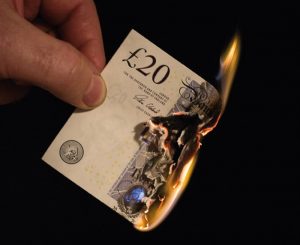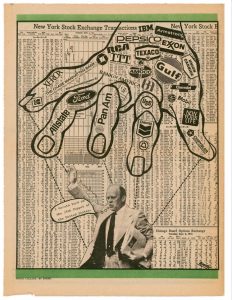As i’m going to spend the next few 24 hours in planes and airports eating crap food, being attacked by some yellowing videos of Mr Bean and cursing myself for not going where i ought to go, i thought i’d leave you with the very very excellentissime projects i saw two days ago at the work in progress show of the Royal College of Art in London. More precisely the works developed by the students of Platform 11, a studio within the Design Products course at RCA. Run by Noam Toran, Onkar Kular and Carey Young the platform uses design as a medium to address contemporary and speculative issues related to technology, psychology and socio-political trends.
I became aware of the amazing quality of their work last year with projects such as Mr Whippy (a machine that proffers ice cream according to the perceived unhappiness level of the customer), the Avatar Machine (a system allowing the user to view themselves as a virtual game character in real space via a head mounted interface), a performance on remote control skates inspired by the Milgram and the Stanford Prison experiments, etc. They were first years students. Last year’s graduated projects included some equally impressive pieces such as Nouveau Neolithic and Life/Machine – Scenes from a roboted Life.
Here’s a selection of what the platform is exhibiting at RCA this week.
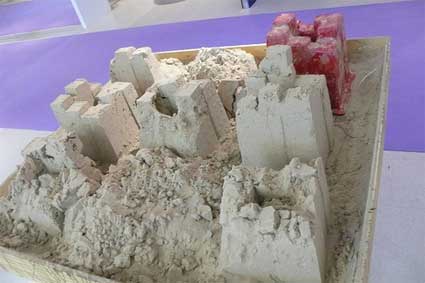 Models for a Sand Castle City
Models for a Sand Castle City
“Progress and catastrophe are opposite faces of the same coin” – Hannah Arendt
Tony Mullin designed buckets for the beach shaped like iconic buildings from the urban landscape, there is the Manhattan apartment block, the Empire State building, a famous Dubai hotel, etc.
The image of a kid building a sand castle evokes innocence. But what happens if a sand building that looks like it comes right from our urban landscape is crushed by feet or swept away by the sea? Would we still find it sweet or potentially subversive? How much has our perception of a disaster been modified by 9/11 and Hurricane Katrina?
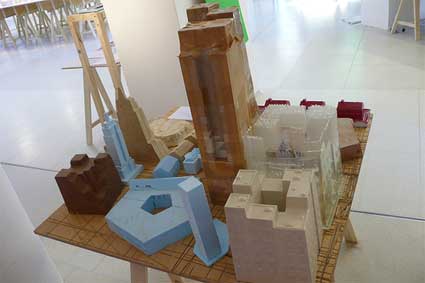 Designing a Protest
Designing a Protest
The Serious Organized Crime and Police Act 2005 prohibits anyone staging spontaneous protests within a 1km radius of Westminster’s Houses of Parliament. However, Tony Mullin found a loophole in the law. You can carry placards around those no-protest zones as long as they do not carry any slogan.
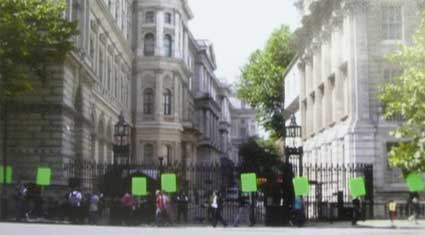
On the 20th of June 2007 the students led a group of volunteers on a walk through the exclusion zone carrying blank green placards. Using Green screen technology, he has been exploring how to invite others to add the ‘political content’ during broadcasting. Basically, the idea is to create a service enabling protesters to use the footage of people carrying the blank placards around the House of Parliaments and add their message onto it afterwards. The video could then be distributed on you tube and other media.
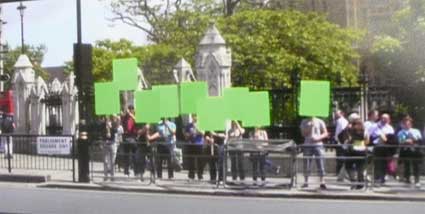 David pumpe by iron pumper
David pumpe by iron pumper
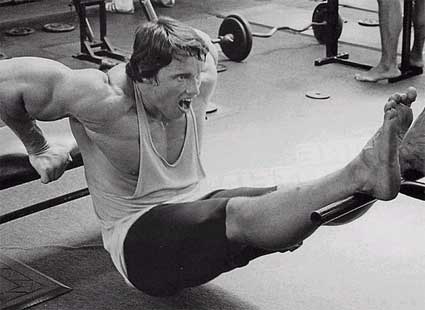 Arnold training (image)
Arnold training (image)
Lucia Massari gave the best introduction to her project one can dream of: a quote from Arnold Schwarzenegger, Encyclopedia of modern Bodybuilding.
Competitive body-builders use body-building techniques to develop their physiques to a degree human beings have never been able to achieve before, and then compete with one another to determine who has reached the highest level of development. Since you can only shape and develop your body in this manner by means of extremely difficult physical effort and precise exercise techniques, body-building must be defined as a sport; but the aesthetic goal of achieving just the right blend of muscularity, symmetry, proportion, and muscle shape, and the need to show it off by a mastery of stage presentation also makes body-building a highly demanding art form.
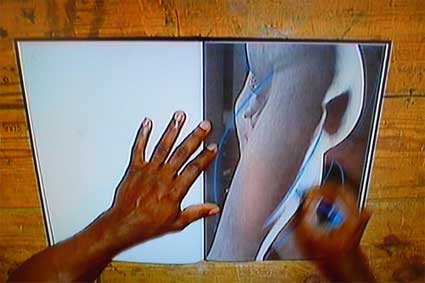
The concept of what is a beautiful body for a bodybuilder is at odds with what we would see as a beautiful body. Lucia hired a bodybuilder -who calls himself “the Iron Pumper”. She then handed him a book containing b&w pictures of one of the most iconic representation of the perfect body: the sculpture of David by Michelangelo. She then asked him to freely comment on it and tell the camera what he thinks of David’s body.
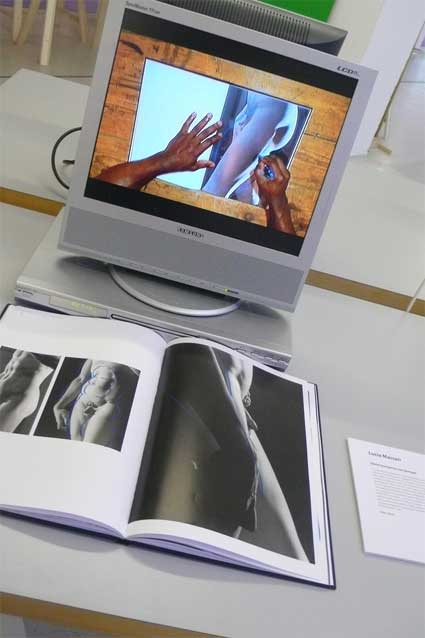
The result is a hilarious video where Iron Pumper criticizes the body and adds a few strokes with a pen on the pages of the book to indicate what the body of a bodybuilder should be like: bottom should be higher, calves should be “more bigger”, biceps ought to be rounder, the cheeks have fat here, etc. My favourite moment is when he draws teeth on David’s face because “you have to give a smile to the judges and show them how happy you are to show your muscles round and nice!” and “wrinkles kick in when you frown like that”.
With Imagine Being a World Leader Dash Macdonald plans to create the framework for a fun and educational role-play exercise that teaches primary school children leadership and public speaking skills.
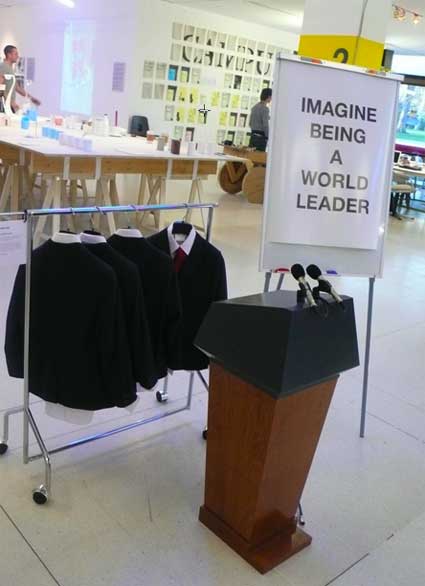
Macdonald built a scale model of a presidential speaking stand, bought a collection of suits for 8 and 9 years old and worked with the school Jubilee Primary School in Hackney. The children will be trained like professionals during workshops by a professional public speaking coach; Ysabel Clare. The workshops will incorporate exercises tailored to teach children key rhetoric rules and text-book gestures. These are vital tools widely used by leaders in the art of successful persuasion, guaranteed to win the attention and approval of an audience. The final project will be a video of their speeches at school. The kids will be able to choose freely what theme they want to put forward during their speech.
Revisiting the community Shed uses design to generate links between a small community with a unique history and a wider audience.
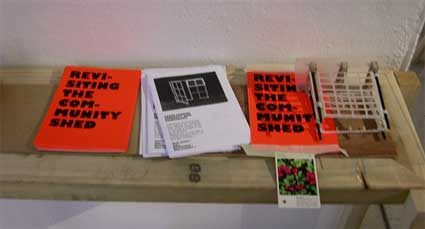
Thomas Pausz met a group of allotments owners and initiated a dialogue about their life at Manor Gardens -a former allotment site which is currently being relocated in the Olympic Legacy Park. He created a brochure where they would describe the “community shed” they had lost. Collectively built, the shed is a place of self initiated democratic dialogue, parties, barbecues and afternoon naps.
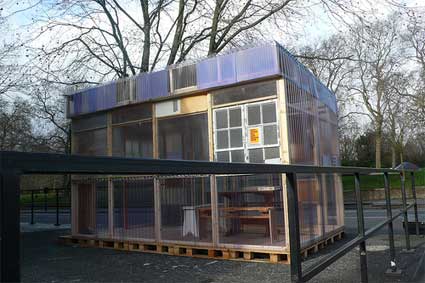
Based on the description of the techniques and materials given by the original users of the shed, and using salvaged architectural parts and wood as well as industrial materials, the student re-built the shed, this time right out of the RCA entrance.
This piece is a celebration of memory, the transmission of design know-how between generations and cultures and of community survival against the odds.
Tom Foulsham si showing some marvelous mad inventor-like mechanisms that he uses in his investigation into drawing with light. No detail on those, i find them too poetically cryptic for that.
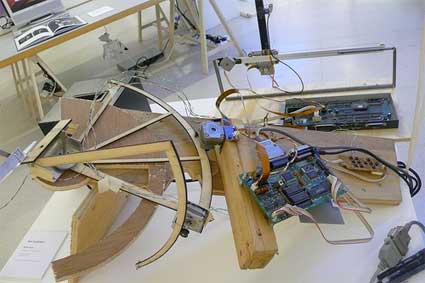
My images.
Related: Interview of Noam Toran.

